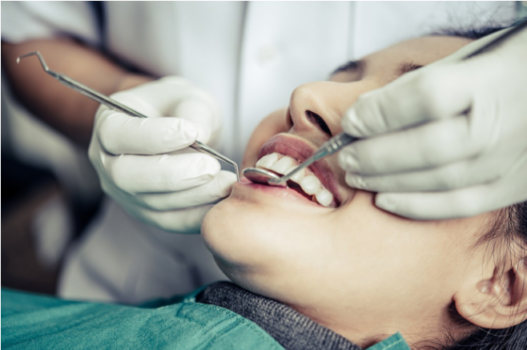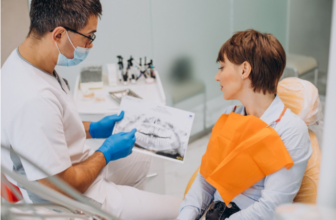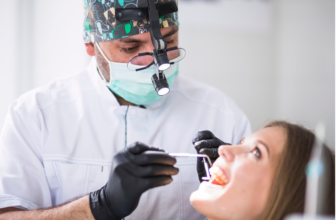Guide to Dental X-Rays
What Are Dental X-rays?
Dental X-rays, or radiographs, are imaging tests that use low doses of radiation to capture detailed pictures of the teeth, gums, and jawbone. They help dentists see issues that may not be visible during a routine oral exam, such as cavities between teeth, bone loss, or impacted teeth. Dental X-rays are essential for diagnosing, monitoring, and treating various oral health issues.
Types of Dental X-rays
- Bitewing X-rays: Show the upper and lower teeth’s crowns in a single area, usually used to detect decay between teeth.
- Periapical X-rays: Focus on showing the entire tooth from crown to root, often used to detect issues in the root or surrounding bone.
- Panoramic X-rays: Capture a broad view of the entire mouth, including all teeth, jawbones, and sinus areas, and are often used for planning orthodontic treatments or detecting tumors.
- Occlusal X-rays: Display the floor of the mouth and are often used to detect issues such as extra teeth or jaw fractures.
- Full Mouth Series: Combines multiple types of X-rays to provide a complete picture of the patient’s oral health.
Why Get Dental X-rays?
Dental X-rays are essential for diagnosing hidden problems, planning treatments, and monitoring oral health. They reveal cavities, infections, bone loss, developmental issues, or the position of unerupted teeth, helping ensure timely and effective dental care.
Health Symptoms and Reasons to Get Dental X-rays
Consider dental X-rays if you experience:
- Persistent toothache or sensitivity.
- Swollen or bleeding gums.
- Signs of decay or dark spots on teeth.
- Jaw pain or discomfort.
- Impacted or partially erupted teeth (like wisdom teeth).
- Previous history of extensive dental treatments.
What Type of Health Professionals Perform Dental X-rays?
- Dentists: Diagnose and interpret X-ray results and recommend further treatments if needed.
- Dental Hygienists: Often perform the X-ray procedure as part of a routine checkup.
- Oral Radiologists: Specialists who interpret complex dental and maxillofacial X-rays if additional expertise is needed.
What Is the Dental X-ray Process?
- Positioning: The patient is seated, and a lead apron is placed to protect the body from radiation exposure.
- Film or Sensor Placement: A small sensor or film is placed in the mouth to capture images.
- Taking the X-ray: The dental professional activates the machine, and the X-ray image is quickly captured.
- Review: The dentist or radiologist reviews the images to identify any potential issues.
How to Prepare for Dental X-rays
- Brush and Floss: Make sure your teeth are clean before the appointment.
- Inform of Pregnancy: If you are pregnant, inform the dental professional as precautions may need to be taken.
- List Any Concerns: Inform the dentist of any symptoms or pain areas so they can focus on these during the exam.
- Avoid Jewelry: Remove any jewelry, especially around the neck and face, as it can interfere with the X-ray.
How Often Should Dental X-rays Be Taken?
Frequency depends on age, oral health history, and risk factors:
- Low Risk: Once every 1–3 years.
- Moderate Risk: Annually, especially for patients with a history of decay or periodontal disease.
- High Risk: Twice a year for individuals with ongoing dental issues or frequent treatments.
What’s the Next Step After Dental X-rays?
- Review with Dentist: The dentist explains the results, including any findings and necessary treatments.
- Treatment Plan: If issues are identified, a treatment plan will be discussed and scheduled.
- Follow-Up: If no issues are found, the dentist may recommend a standard checkup schedule.
Risks of Dental X-rays
Dental X-rays use very low doses of radiation, making them generally safe. Wearing a lead apron protects the body, but pregnant women may avoid X-rays to minimize any potential risks. Repeated exposure over time may pose risks, but this is typically minimized through the limited and targeted use of X-rays.
Dental X-rays Alternatives
While no true alternatives provide the detailed view of an X-ray, alternatives include:
- Oral Examination: Physical exams detect visible surface issues but miss deeper problems.
- Advanced Imaging (e.g., MRI or CT scans): Used in complex cases but typically not for routine dental checkups due to cost and higher radiation.
Questions Related to Dental X-rays
- Why are dental X-rays needed if I’m not experiencing pain?
- X-rays detect hidden issues, such as early decay or bone loss, that aren’t always accompanied by pain.
- Are dental X-rays safe?
- Yes, they use low radiation levels, and protective measures like lead aprons minimize exposure risks.
- How long does a dental X-ray procedure take?
- X-rays take only a few minutes, and digital X-rays display results instantly.
- Will my insurance cover dental X-rays?
- Most dental insurance plans cover X-rays as part of preventive care; check with your provider for specifics.
- How do I know if I need a specific type of X-ray?
- Your dentist will determine the necessary type based on symptoms, oral history, and the specific area of concern.
- Can I get an X-ray if I’m pregnant?
- It’s best to avoid X-rays during pregnancy unless absolutely necessary. Inform your dentist if you’re pregnant.
- Will dental X-rays hurt?
- The procedure itself is painless. Some patients may feel slight discomfort from the sensor placement in their mouth.
- How often should children get dental X-rays?
- Children with a higher risk of decay may need annual X-rays, while others might require them less frequently.
- What happens if a cavity is found on an X-ray?
- The dentist will discuss treatment options, such as fillings, to address any detected cavities.
- Do dental X-rays show wisdom teeth?
- Yes, panoramic and periapical X-rays can reveal wisdom teeth and help determine if they’re impacted or causing issues.
The Hosst.com Platform uses a Digital Twin to help users manage their health by tracking, organising, and optimising healthcare activities. It provides personalised insights and assists with scheduling checkups, tests, and doctor visits.
Key features include:
- Symptom management: Recommends tests and treatments based on user input.
- Health data tracking: Monitors glucose, blood pressure, and more from health devices or manual inputs. Connects with your favorite apps and health monitors.
- Alerts: Warns of abnormal health signs and suggests corrective actions.
- Lifestyle recommendations: Offers diet, medication, and lifestyle tips based on health trends.
- Test result interpretation: Simplifies complex results and explains what they mean for the user.
- Preventive care: Sends reminders for checkups and suggests actions to prevent illness.
- Health scenario simulations: Predicts potential health outcomes based on current data.
- Product and service finder: Helps users find the right healthcare product or service.
- Doctor visit preparation: Gathers vitals, history, insurance, and questions for productive visits, with easy sharing to doctors.
- User-friendly: Ask in your own words, available on tablets, desktops, and mobile devices.
The platform simplifies health management and improves well-being. Free and easy to use and no installation required, get started today.
Disclaimer: The information provided in these articles is for informational purposes only and is not a substitute for professional medical advice, diagnosis, or treatment. Always consult with a qualified healthcare professional before making any decisions about your health or starting any treatments.
Photo credits Freepik.com






